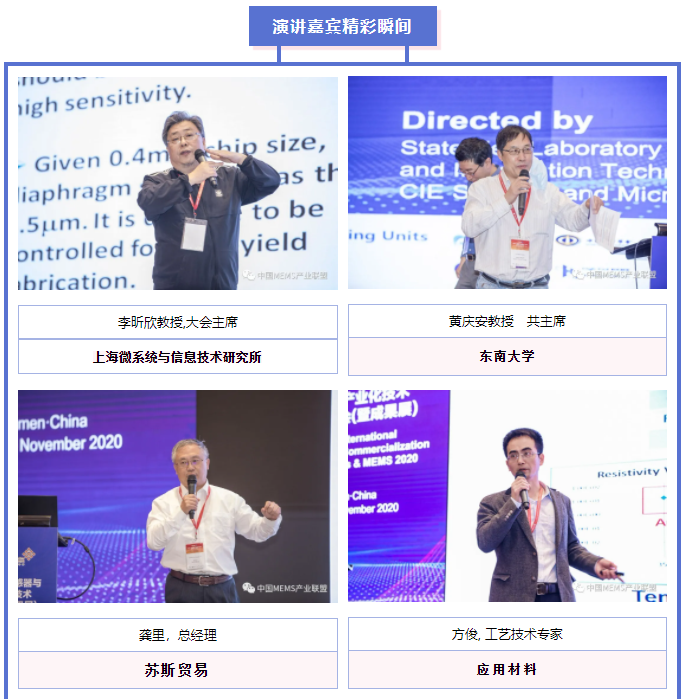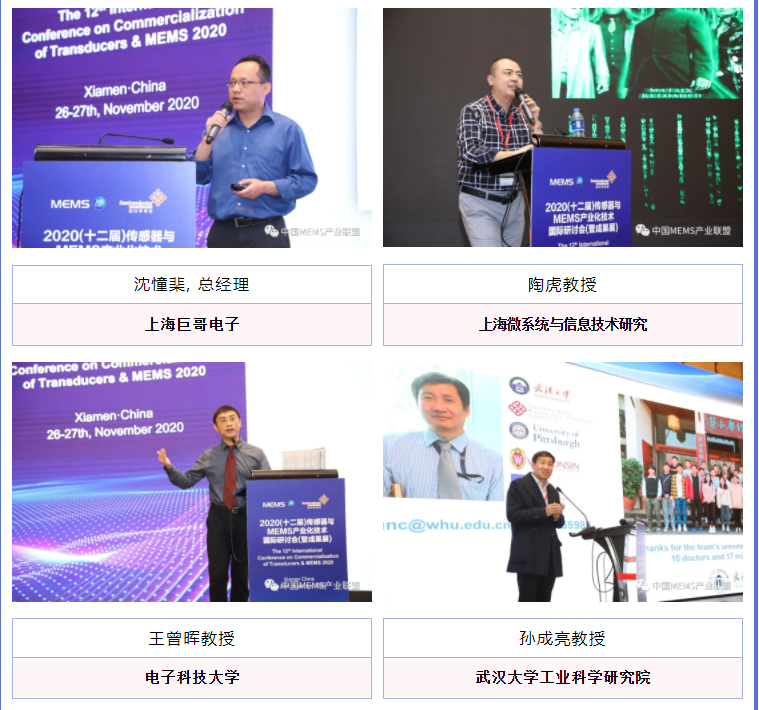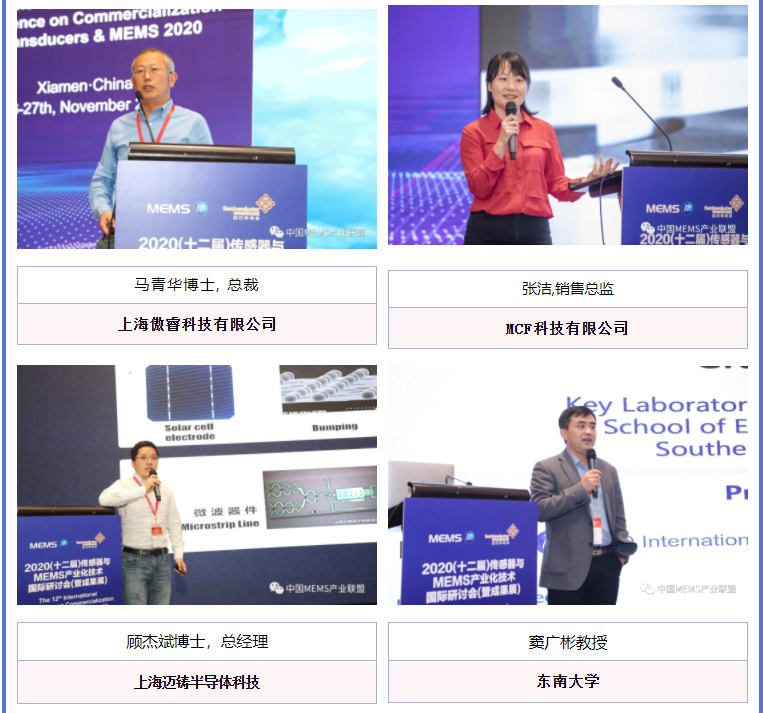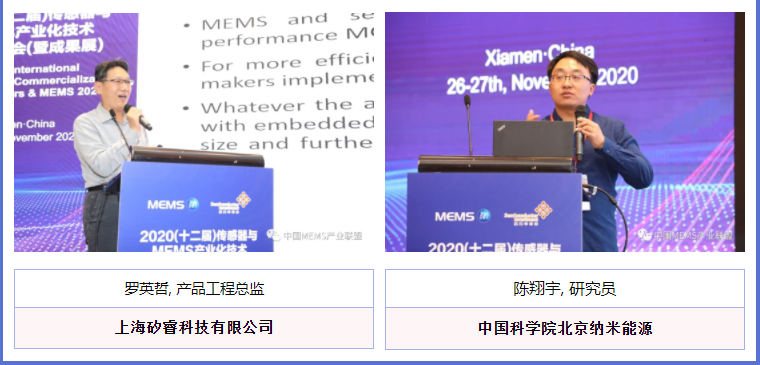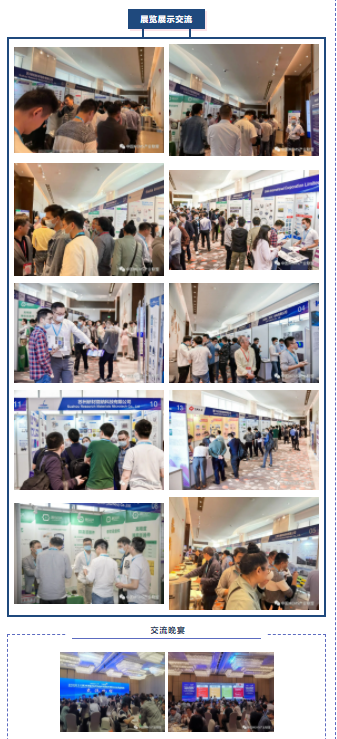November 26-27, sponsored by the Joint State key Laboratory of Sensing Technology, Shanghai Institute of Microsystems and Information Technology, Chinese Academy of Sciences, and the Sensing and Microsystem Technology Branch of the Chinese Society of Electronics The 2020 (12th) International Symposium on Sensor and MEMS industrialization Technology (and Achievement Exhibition), sponsored by Xiamen Semiconductor Investment Group Co., Ltd and Shanghai Dragon Media Business Consulting Co., Ltd., was successfully concluded at DoubleTree by Hilton Agra in Haicang, Xiamen, China. This forum invited more than 30 top enterprises and scientific research representatives in the global MEMS field to attend the lecture. Total 31 professional reports They are leaders of Xiamen Haicang District, Xiamen Semiconductor, Alibaba, Bosch, Tsinghua University, Zhengzhou Weisheng, Yifa Film, Honeywell, Shanghai Microsystems Research Institute, Haowei Technology, Xiamen Yuntian Semiconductor, Hangzhou Shilan Micro, Suzhou Jingfang, Minxin Microelectronics, Soos Trading, Xiamen Heinmai, MCF Technology, Yole, Tohoku University of Japan, Applied Materials, Beijing Sai Microelectronics, Giant Brother Electronics, Southeast University, University of Electronic Science and Technology, Shanghai Aorui, Wuhan University, Shanghai Maizhu, Peking University, Silicon Science and Technology, Beijing Nano Energy Two of the foreign guests gave speeches by video.
Since the 12th International Symposium on Sensor and MEMS industrialization Technology (and Achievement Exhibition), the number of participants has reached a new high again, and the audience is full. [MEMS International Conference] has been held for three consecutive sessions in Haicang, Xiamen. The participants came from competent units, enterprise leaders, government agencies, local peer associations, investment institutions, securities and universities, science, research, institutions and other relevant leaders and experts, as well as MEMS & sensors, IoT upstream and downstream industry chain enterprise R & D leaders and decision-makers, industry media, etc., a total of more than 400 professionals attended.
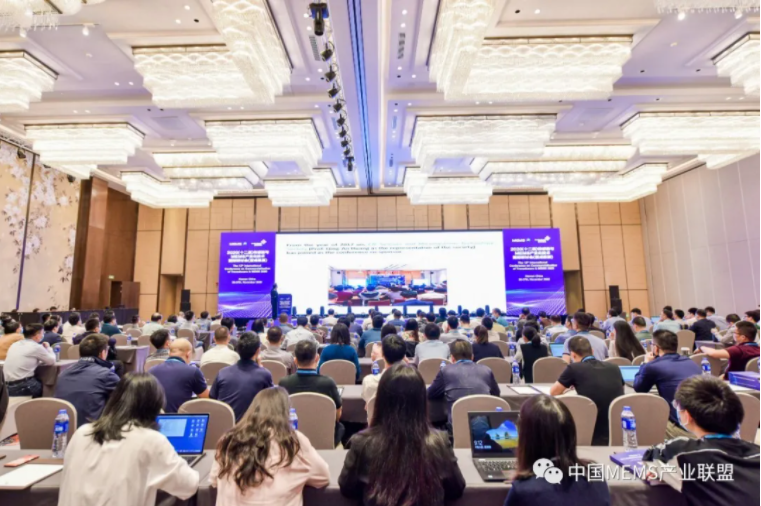
Professor Li Xinxin of the Shanghai Institute of Microsystems and Information Technology of the Chinese Academy of Sciences presided over the opening ceremony.
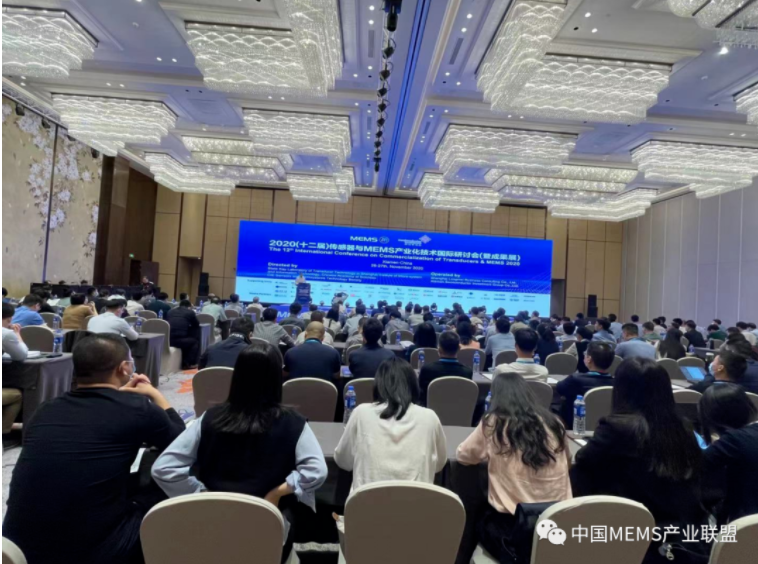
Zhang Chunjie, deputy director of the Administrative Committee of Xiamen Haicang Taiwan Investment Zone, delivered a welcome speech.
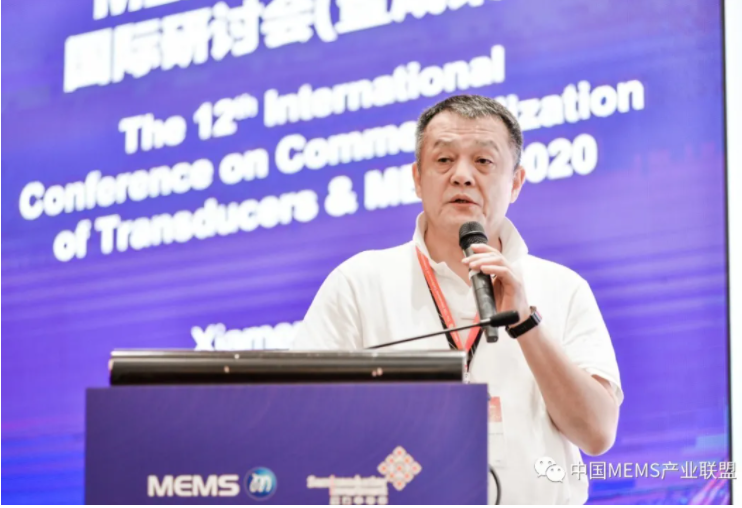
Wang Huilian, Managing Director of Xiamen Semiconductor Investment Group Co., Ltd.
With the theme of "Poetry and distance"-- exploring the development path of China's semiconductor industry ", Mr. Wang specifically mentioned at the meeting that large-scale commercial market and product concentration formed today's industrial development model and IDM in the early stage of global industrial division of labor. In the case of the contract manufacturing model Fabless formed in Taiwan in the late 1980s, it is a more reasonable way to operate with Fabless at the initial stage of industrial development, but with the rapid growth of China's market, technological evolution, driving product diversity, development of multi-forms and other factors, the OEM model has begun to restrict our development, especially in the fields of simulation, MEMS, power, compounds and so on. In addition, with the intensification of strategic competition between China and the United States, there is more room for localization, and the research and development of products supported by Foundry standard process are more limited, especially those supported by process technology and device structure, which has also become a development opportunity for us to seek a breakthrough, especially in the field of MEMS.
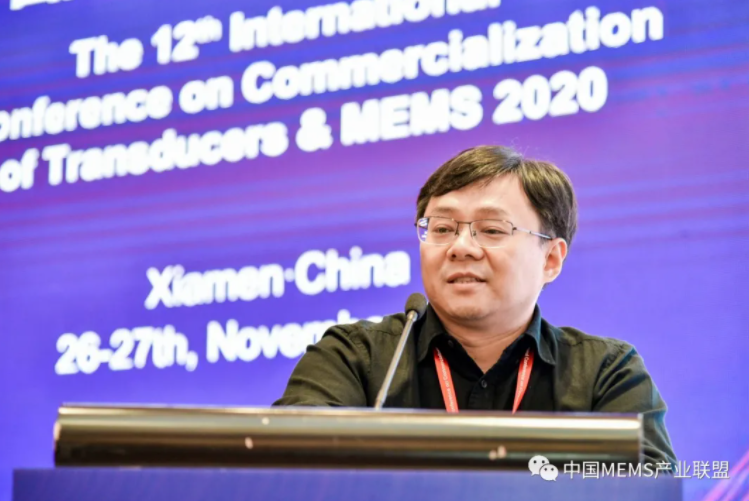
GE Wei senior technical expert, Alibaba Aliyun IoT Division
GE Wei's speech title "Intelligence of everything and HaaS Building blocks" the Internet of things era is an era of the Internet of everything, but how to map physical things to the virtual network? This depends on a variety of sensors, that is, sensors are the key devices for the Internet of things to perceive the physical world. But if there are only sensors, then the data collected from the actual physical world can not be used, so these data must be transmitted to our computing center, so another key equipment is the network transmission equipment. In the development process of our actual project, all kinds of connected devices will be developed according to the actual needs of the project, which leads to the fragmentation of connected devices, so we put forward the concept of HaaS, so that the hardware can also be used as a service, which can greatly reduce the development cost and cycle of the Internet of things project.
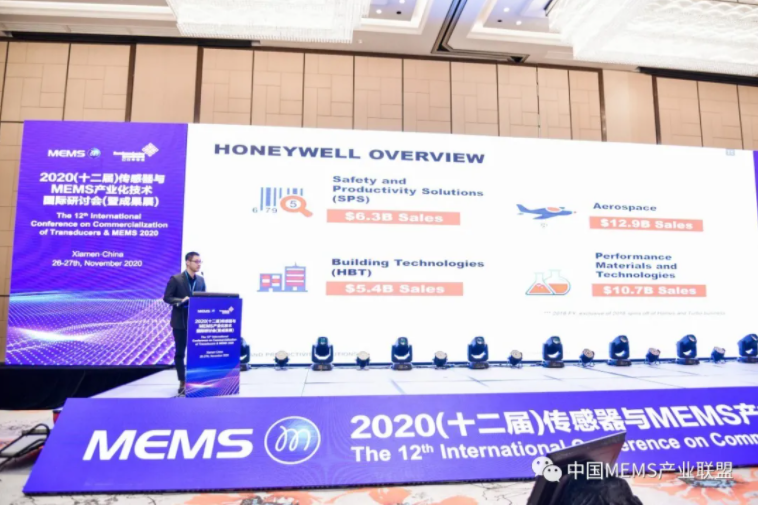
Lin Lin, Product Manager, Sensor Union Business Division, Honeywell
The title of Manager Lin's speech, "Medical sensors", describes the group and parent company of Honeywell Sensor and things, as well as the market drivers of the medical device industry. The main applications, core products and solutions of all kinds of sensors in the field of medical devices.
Wang Hongyu, President of Asia Pacific, Bosch Sensortec GmbH
As the world's leading MEMS sensor supplier, Wang Hongyu, president of Bosch Sensor Asia Pacific, attended the meeting. Wang Hongyu first pointed out in his speech that the development of sensors is roughly divided into several stages. The first stage of the MEMS wave is driven by the car, in this stage, the main role of the sensor is limited to reading the original data; in the second stage, the mobile phone has become the main driving force, when the sensor can evaluate the data, and now the emergence of IoT is promoting the development of MEMS sensor to the next stage. There is no doubt that the future sensor will have more learning ability and become more intelligent.
However, it should be noted that from the perspective of user experience, if all data is processed in the cloud, not only the power consumption problem needs to be solved, but also a series of problems such as data delay, data privacy disclosure and so on.
So how to solve the power consumption and achieve data security? Wang Hongyu believes that edge AI is the answer that the sensor industry is looking for. As the name implies, edge AI refers to the implementation of AI within the MEMS sensor itself.
Wang Hongyu pointed out that running the AI algorithm in edge devices mainly includes four benefits: the first is that it can be customized, and the second is the privacy protection of user data, because data processing is only processed at the edge and does not need to be uploaded to the cloud, so the data is private, the third is real-time feedback, edge execution can avoid the delay caused by data transmission, and the fourth is that local processing can extend battery life.
But the edge AI is still in the early stage of development, how Bosch sensor layout in this aspect, and its next step are worthy of our expectation!
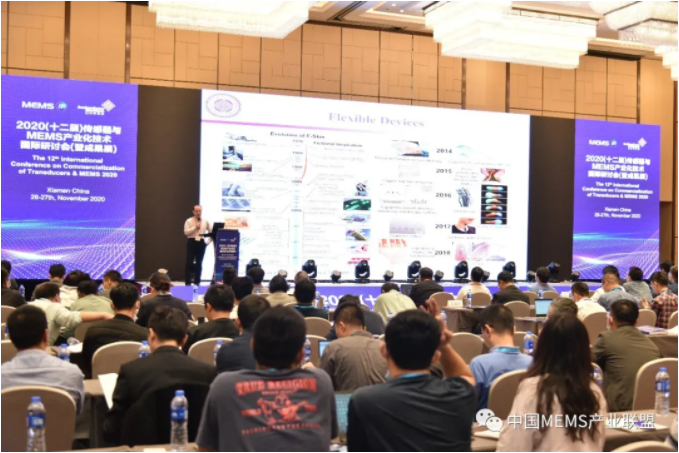
Ren Tianling, Associate Dean of School of Information Science and Technology, Tsinghua University
Professor Ren, entitled "New flexible devices for medical and health care", outlined at the conference that with the development of society, the aging population, high-risk diseases and sub-health of adolescents are becoming more and more serious. has become a major factor affecting people's health and quality of life. The traditional doctor-patient face-to-face diagnosis model can no longer meet the growing health care needs of people, and its efficiency in the use of time and resources needs to be further improved, which brings great challenges to the medical industry. Compared with traditional electronic device systems, flexible electronic devices have the characteristics of ultra-thin, low elastic modulus, light weight, good tensile properties and so on. It has a wide application prospect in aerospace, consumer electronics, biomedicine and many other fields. In the field of flexible electronic equipment for medical and health detection and monitoring, monitoring various signals in human activities has become an important academic research direction. This report will first introduce the major breakthroughs in flexible electronic technology in recent years, and then introduce the progress of Professor Ren Tianling's team in flexible electronic technology. Finally, this report will look forward to the development prospect of wearable flexible electronic technology.
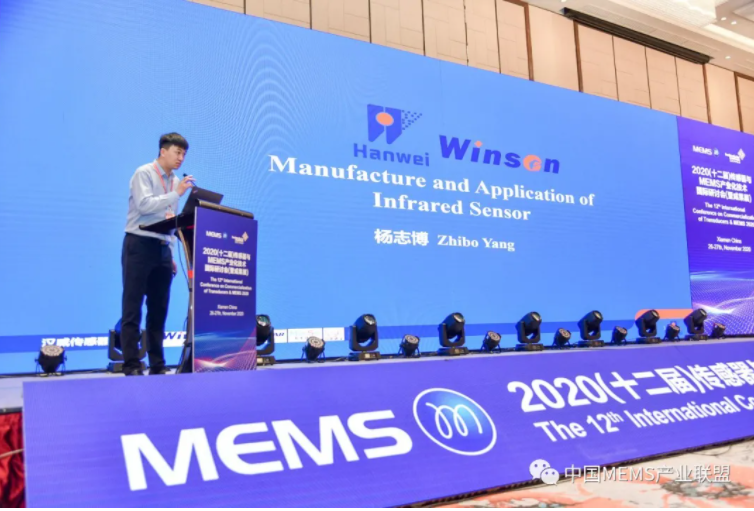
Yang Zhibo product engineer, Zhengzhou Weisheng Electronic Technology Co., Ltd.
Yang Zhibo talked about the unprecedented rapid development of infrared temperature sensor this year with the theme of "manufacture and application of infrared detection sensor". First of all, the report introduces the working principle background of infrared sensors in detail, and enumerates different kinds of infrared sensors. The packaging and manufacturing process of infrared sensor is described in detail, and an example is given to illustrate its application field. Finally, the various types of infrared sensors and other MEMS sensors of Weisheng Technology Company are briefly introduced, and the development prospect of MEMS sensors is considered and prospected.

Wu Xiaodong, Senior Vice President of Global sales and Marketing of Howell Technology
Wu Xiaodong, senior vice president of global sales of Howie Technology, delivered a speech at [MEMS International Conference] entitled "exploring the World, Infinite perception". The world is rapidly moving from the traditional computing era to the artificial intelligence (AI) era, and the future will enter the perceptual era. As advanced sensing terminals, image sensors are everywhere and improve our lives. Wu Xiaodong specifically pointed out that the image sensor will take AI as the burst point in 2020. At present, CMOS image sensor (CIS) is mainly used in vehicle, security surveillance and medical imaging fields. Predictably, the cross-border integration of sensor technology is becoming a new trend in the development of the industry.
Mr Wu said Howe was moving beyond "multipoint", such as smartphones, cars and security. According to reports, the company launched the industry's first 8.3 megapixel HDR + LFM image sensor platform OX08B with LED flicker suppression, a flagship mobile image sensor OV48C with 1.2 micron large pixels, and the industry's only 0.7 micron small pixel image sensor with a resolution of 64 million. OV64B. At the same time, Howie Technology has also made a corresponding contribution to the fight against the epidemic through medical sensors. In addition, Howie Technology has also added TDDI, EVS and fingerprint recognition related product lines. Wu Xiaodong pointed out that Haowei Technology will continue to increase investment in research and development to enhance the driving force of scientific and technological innovation. It is worth mentioning that according to Nikkei last month, Howie Technology has obtained permission from the U.S. Department of Commerce to supply some of Huawei's products, which means that Huawei may have a secure supply of image sensors for its mobile phone and PC business.
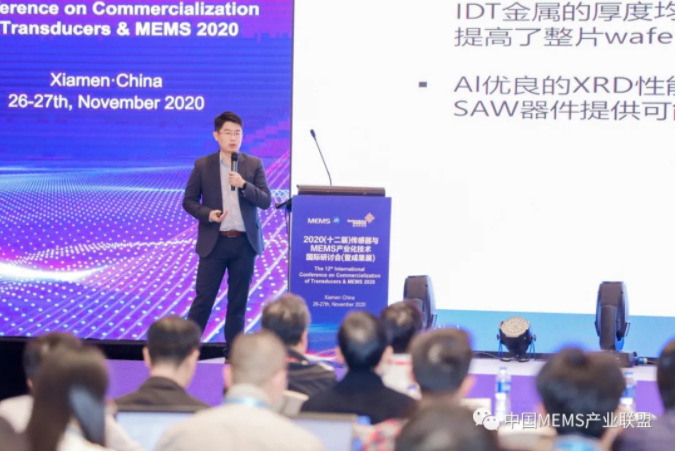
Dr. Lu Yuan, Technical Marketing Manager, Evatec China Ltd.
In recent years, 5G communication has become a technology that more and more people talk about and use, not only in daily mobile phones and computers, but also in our computers, smart cars, medical and other fields. As a signal transceiver module, the high frequency filter used in 5G needs faster speed, wider bandwidth and less loss. It is estimated that at most dozens or even hundreds of filters will be integrated in flagship phones to adapt to different bandwidths. This requires the use of high-precision and high-performance semiconductor materials to process. Evatec, as a company with 70 years of process experience, has a benchmarking process for the thin film growth of both bulk acoustic waves and acoustic meter filters to ensure the high performance and low temperature drift characteristics of the filters. In this report, we solemnly recommend the latest thin film process technologies for bulk acoustic waves and acoustic meters.
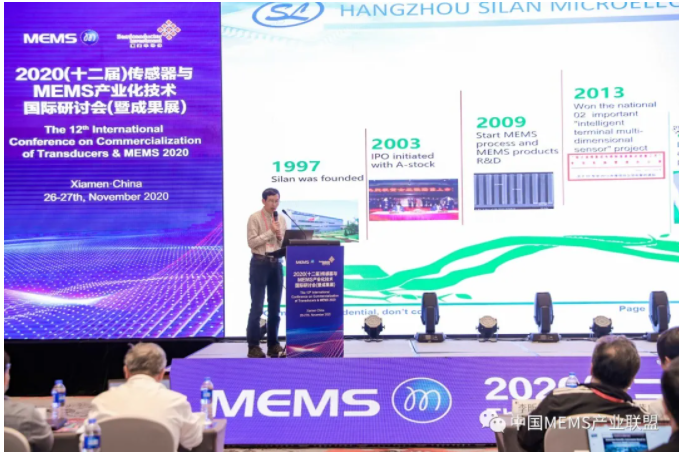
Wen Yongxiang, Technical Director of Technology, Hangzhou Shilan Microelectronics Co., Ltd.
Wen Yongxiang, the technical director of Shilan Microelectronics, shared the company's manufacturing capability and technology of MEMS, as well as the technical advantages of the IDM model, at the [MEMS International Conference]. Among them, Wen Yongxiang pointed out that the production of MEMS products of Shilan Microelectronics adheres to the operation mode of IDM, with a complete design and manufacturing supply chain, an independent R & D center, as well as chip production, packaging and testing factories, electrical laboratories and EMC laboratories. Since its establishment in 1997, Shilan Microelectronics has become one of the largest integrated circuit chip design and manufacturing (IDM) enterprises in China.
Wen Yongxiang said that MEMS products operate through the IDM mode, so that production capacity can be guaranteed, quality can be controlled, and the performance of new technologies and products can be improved. Secondly, there are many kinds of MEMS processes, and there are great differences. It is difficult for one production line to support the mass production of multiple sensors, while IDM mode can greatly control costs and has cost advantages, thus providing customers with the most cost-effective products. In addition, IDM mode makes production management convenient, and technology reuse can also shorten the time to market.
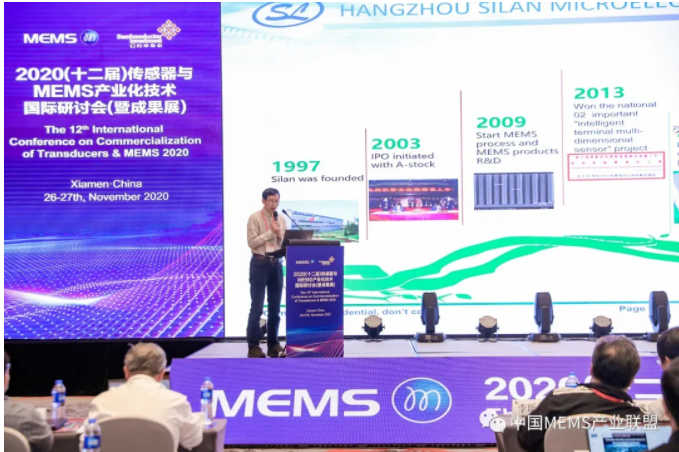
Chairman Yang Yunchun Beijing Sai Micro Electronics Co., Ltd.
In his speech at [MEMS International Conference], the topic "Building a world-class MEMS foundry service platform based on strong common key process manufacturing technologies" focused on the wide application of MEMS devices (sensors, drivers, etc.) in modern society: from traditional aviation navigation, industrial control, biomedicine, mineral source exploration, consumer electronics, security monitoring. To the current popularity of 5G&6G high-frequency communications, artificial intelligence, self-driving, Internet of everything (IOT). There are thousands of MEMS products. This has resulted in many "customized" process manufacturing technologies corresponding to the products. This poses a severe challenge to MEMS manufacturing enterprises, especially MEMS contract manufacturing enterprises (foundry). Selex International has systematically analyzed and classified the process manufacturing technology of MEMS products. The key manufacturing processes of each product are extracted and compared, and the common key processes are further obtained. By focusing on these MEMS common key process manufacturing technologies, R & D investment, IP deployment, and gradually build a modular large-scale MEMS process manufacturing system. These initiatives have yielded results: after being named No. 2 in 2018 for MEMS OEM, Selex was honored to be ranked No. 1 in global MEMS OEM in 2019.
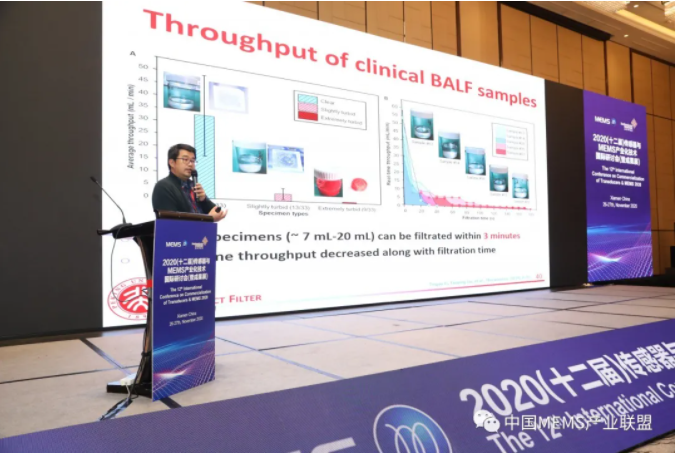
Professor Wang Wei, Peking University
Professor Wang Wei gave a speech at [MEMS International Conference] entitled "liquid biopsy Technology based on flexible filter membrane". He focused on the technology of microelectromechanical system (MEMS) based on Parylene, and developed a precise, efficient, fast, flexible, easy to operate, controllable and thin filter, referred to as PERFECT filter membrane. A large size (> 20 mm × 20 mm) filtration membrane was prepared by Parylene molding process, which contains a 2.5-dimensional (2.5D) micropore array and has ultra-high porosity (as high as 91.37%, and the design pore diameter / space is 100 μ m / 4 μ m). The 2.5D filter membrane is because the large area and relatively small thickness (about 10 μ m) of the membrane represent two-dimensional characteristics, while the large thickness-width ratio between adjacent pores (10 μ m /





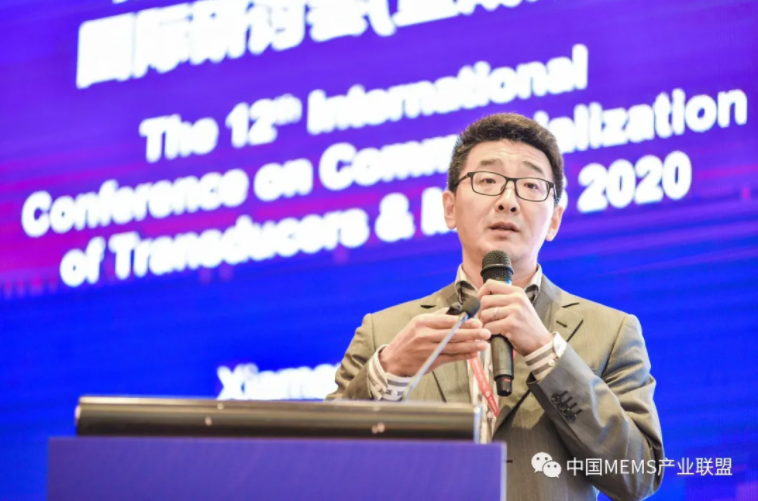
 Ren Tianling, Associate Dean of School of Information Science and Technology, Tsinghua University
Ren Tianling, Associate Dean of School of Information Science and Technology, Tsinghua University

 Dr. Lu Yuan, Technical Marketing Manager, Evatec China Ltd.
Dr. Lu Yuan, Technical Marketing Manager, Evatec China Ltd. Wen Yongxiang, Technical Director of Technology, Hangzhou Shilan Microelectronics Co., Ltd.
Wen Yongxiang, Technical Director of Technology, Hangzhou Shilan Microelectronics Co., Ltd.
 Professor Wang Wei, Peking University
Professor Wang Wei, Peking University